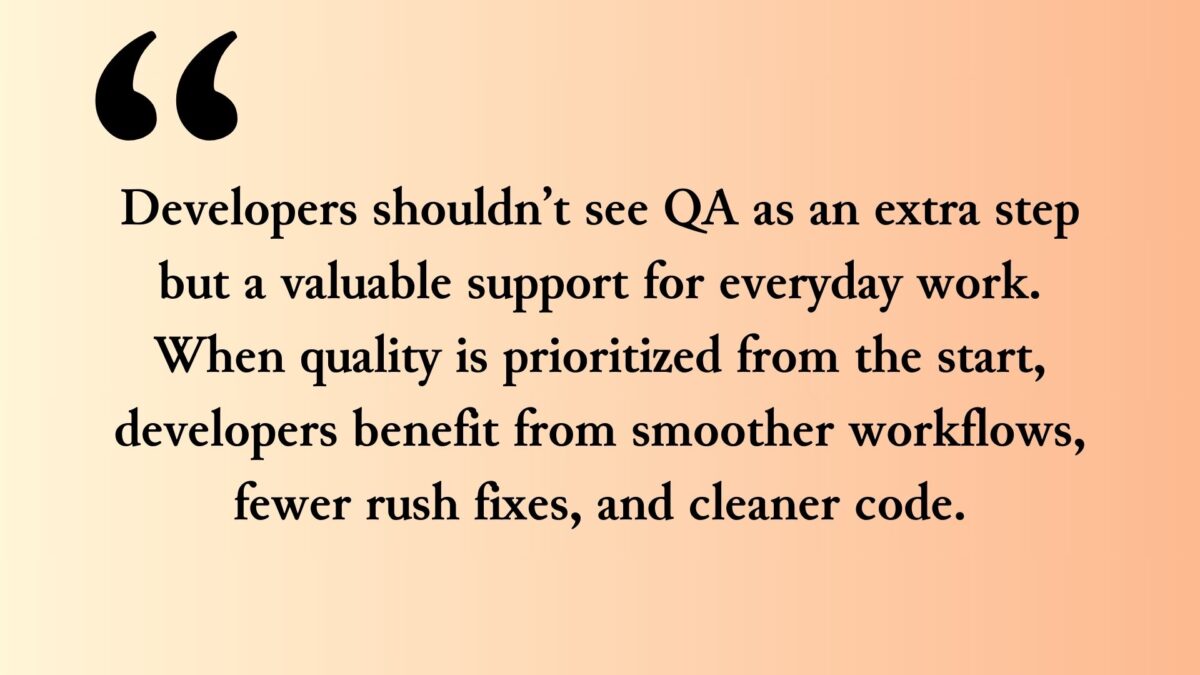Quality assurance brings a sense of control – for developers and decision-makers
02.05.2025

Does software development sometimes feel chaotic? Vague requirements, unexpected bugs, and urgent fixes can easily take over. In these situations, quality assurance isn’t just a technical part of the process — it’s a mental safety net that brings clarity, predictability, and peace to daily work.
Why is a sense of control so important?
A sense of control is one of the most crucial elements of workplace wellbeing. When employees know what they’re doing, trust the processes, and see the impact of their work, stress levels drop and motivation rises. Clear and predictable ways of working not only help individuals — they also improve the flow of the entire team.
In software development, quality assurance is key to building this sense of control. It brings rhythm, consistency, and transparency to complex work.
Quality assurance from the perspective of decision-makers
For leadership and decision-makers, quality assurance primarily means better control: projects staying on schedule and within budget, and delivering a product that meets business needs.
Well-executed quality assurance supports decision-making by providing:
- Transparency: Regular testing and reporting offer up-to-date insights into project progress and software quality.
- Risk management: Early detection of issues reduces the need for large, expensive fixes later on.
- Trust in the development team: Leadership can trust that the team will deliver high-quality, functioning software.
QA in the developer’s everyday work
For developers, QA shouldn’t be seen as just an extra step but a valuable support for everyday work. When quality is prioritized from the start, developers benefit from smoother workflows, fewer rush fixes, and cleaner code.
Concrete benefits for developers:
- Clearer requirements: Tests and review processes guide the team toward well-defined goals.
- Fewer fire drills: Early bug detection means a calmer production environment.
- Better code quality: Systematic QA supports good design and makes future development easier.

How to execute effective QA
Quality assurance isn’t a one-time phase — it’s a continuous part of development. Here are a few practices that help ensure better quality:
- Automated testing: Unit, integration, and acceptance tests for every stage of development.
- CI/CD: Continuous integration and delivery enable fast feedback and more reliable releases.
- Code reviews: Internal team reviews improve code quality and help catch issues early.
- Documented testing process: Well-documented test cases and strategies ensure that all critical parts of the software are thoroughly tested.
In summary: clarity = trust = quality
Quality assurance offers more than just bug-free releases. It brings confidence, predictability, and clarity to teams and leadership alike.
And clarity at work builds trust. When everyone shares an understanding of what quality means and how to pursue it, collaboration improves, and outcomes rise to a new level — without chaos.

- Blog |
- Business |
- QA |
- Software development



